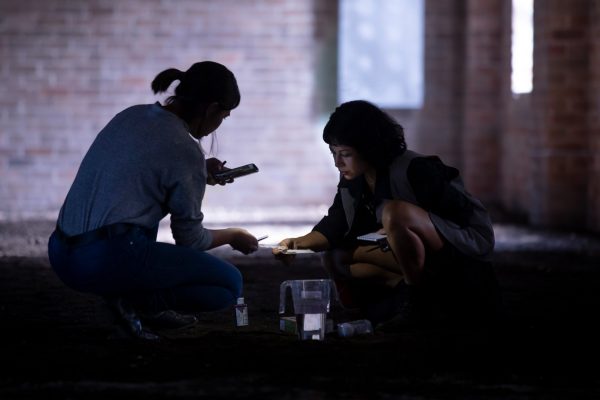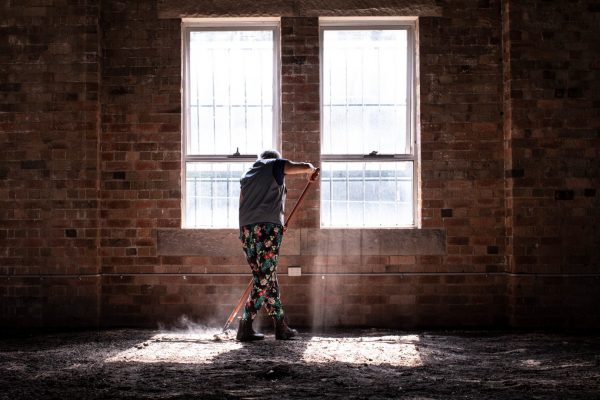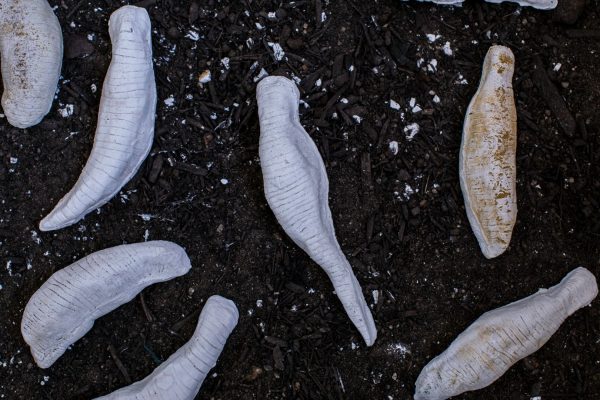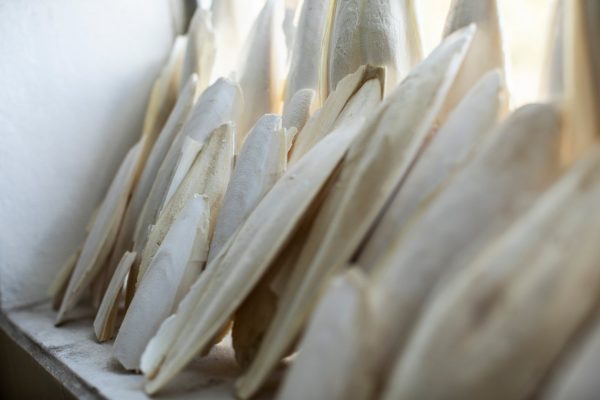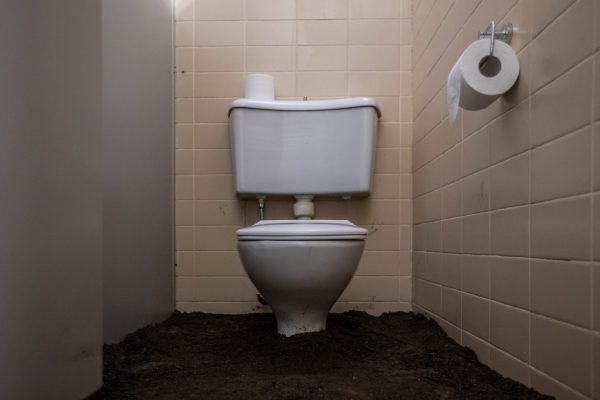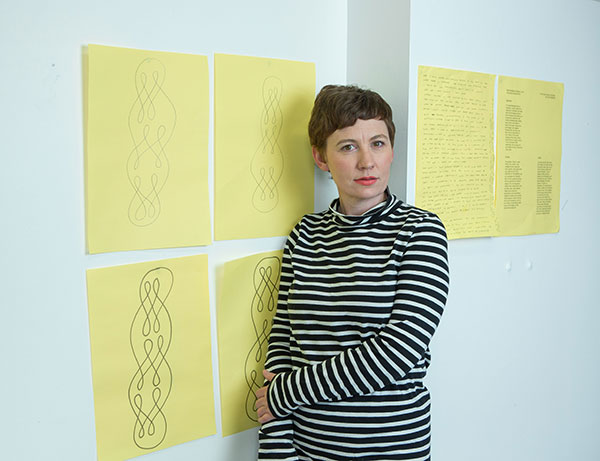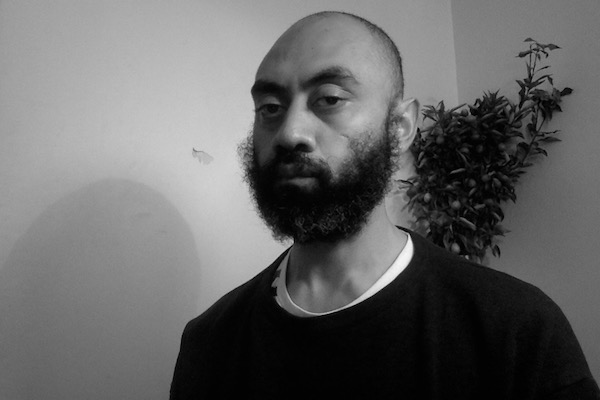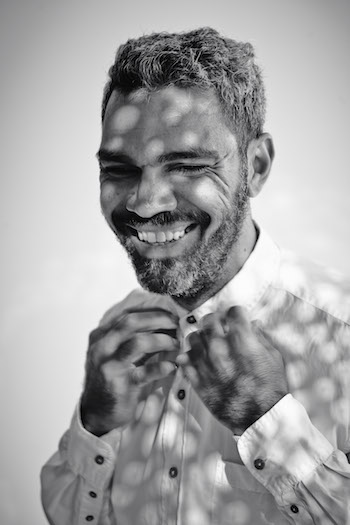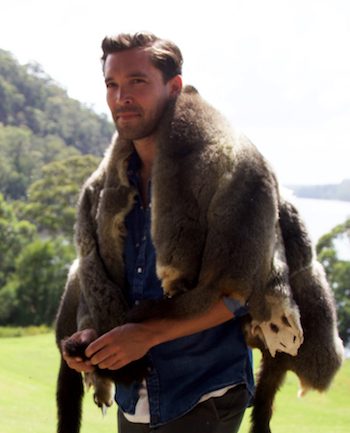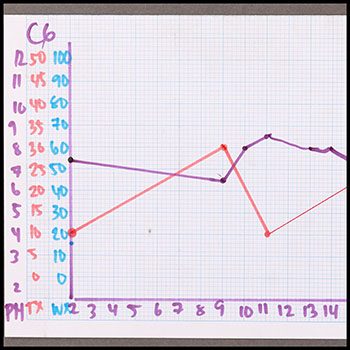PROJECT 34
ASAD RAZA
Project Summary
At Carriageworks in Sydney, on the site of the former Eveleigh Railway Yards, Asad Raza’s project Absorption filled the Clothing Store with approximately 300 tonnes of a new soil mixture, or “neosoil”. The work continued to grow over the course of the project, tended to regularly by a team of “cultivators”. Through these processes, Absorption addressed the living and changing nature of both the political and biological ecosystems that shape today’s world.
Raza conceives of exhibitions as metabolic entities, zones of activity in which he constructs scenarios between visitors and participants. Past works include untitled (plot for dialogue), 2017, which saw Raza install a tennis court in a deconsecrated church in Milan; and Root sequence, Mother tongue, first shown at the 2017 Whitney Biennial, wherein the artist created a forest of twenty-six living trees with human caretakers.
Presented in conjunction with Carriageworks, and developed in collaboration with the University of Sydney Institute of Agriculture, Absorption transformed the Clothing Store into a site for active processes, collaborations and conversations. Cultivators tested, monitored and mixed different materials—including sand, silt, clay, phosphates, lime, cuttlefish bones, legumes, spent barley from a Marrickville brewery, coffee grounds and green waste—in order to create a new composite soil. In the closing days of the project, visitors were free to take soil for their own uses, allowing Absorption to develop into the future.
Raza invited local artists Daniel Boyd, Chun Yin Rainbow Chan, Megan Alice Clune, Dean Cross, Brian Fuata, Agatha Gothe-Snape, Jana Hawkins-Andersen, Khaled Sabsabi and Ivey Wawn to create interventions in the form of installations, performances and experiments. Gothe-Snape’s cultivator uniforms featured fabric from archival John Kaldor Fabricmaker samples; Hawkins-Andersen’s clay figurines were made by cultivators on site, then broken down and raked into the soil; Sabsabi’s interest in Sufi mysticism informed his work Unseen, wherein twenty pieces of kikuyu turf were buried under the soil.
Raza drew together the approaches and ontologies of art and science, allowing for absorption to take place across multiple levels in the creation of this work. “Absorption dramatises the differences between art and science, but it also shows us what they have in common”, wrote the Sydney Morning Herald’s John McDonald. “Artists, like scientists, are constantly pushing back the frontiers of the thinkable.”
Absorption was later presented at the Gropius Bau, Berlin, in 2020, the 2021 Ruhrtriennale, and at the CCA Glasgow in 2022.
Asad Raza
born 1974 in Buffalo, New York, US
lives and works in New York, US, and Berlin, Germany
Absorption
3 – 19 May 2019
The Clothing Store, Carriageworks, Sydney
Exhibiting Artists
Daniel Boyd, Chun Yin Rainbow Chan, Megan Alice Clune, Dean Cross, Brian Fuata, Agatha Gothe-Snape, Jana Hawkins-Andersen, Khaled Sabsabi, Ivey Wawn
Asad Raza, Absorption, Carriageworks, Sydney, 2019
ASAD RAZA
Born in 1974 in Buffalo, US, and of Pakistani background, Raza works with experiences, human and non-human beings, and objects. He conceives of exhibitions as metabolic entities, zones of activity in which he constructs dialogue and scenarios between visitors and participants.
Past works include Untitled (plot for dialogue), for which Raza installed a tennis-like game in a deconsecrated church in Milan. Root sequence. Mother tongue, first shown at the 2017 Whitney Biennial, is a forest of twenty-six living trees with human caretakers in the museum. For home show, which took place at his apartment in New York, Raza asked friends, family and artists to intervene in his own life.
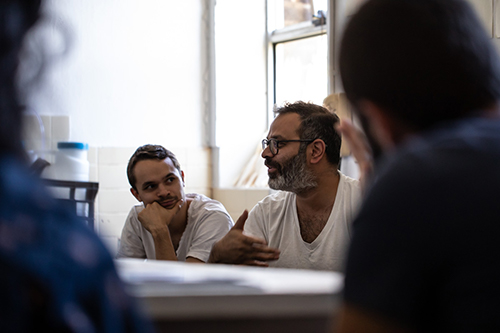
EDUCATION KIT

This Education Kit is designed to help students and educators engage with the themes and concepts of Asad Raza's Absorption.
CONTENTS: Project overview | Artist's practice | Conceptual framework | Classroom questions and activities | Glossary of key terms | References
ARCHIVE for Project 34 - Asad Raza
The Kaldor Public Art Projects archive has been collected over more than 50 years, and features rare and original documentation on the process of realising large-scale, temporary art projects. With thousands of items accessible online through the Digital Archive, it serves as a valuable resource for artists, students, teachers and researchers.
The Project 34 archive details the planning and realisation of Asad Raza’s Absorption at The Clothing Store, Carriageworks, Sydney, in 2019. Spanning 527 objects, the material includes emails, transcribed conversations, essays, schedules, floorplans, marketing drafts and press clippings, along with artist notes, illustrations, soil samples and extensive photographic documentation. The archive covers the artist’s past works, the selection and training of Project cultivators, and proposals and specifications by collaborating Australian artists. Featured items include graphs and note books, documenting the daily activities undertaken by Project cultivators.
John Kaldor shares his personal recollections of working with artist Asad Raza to realise the 34th Kaldor Public Art Project at the Clothing Store, Carriageworks, Sydney, in 2019. (07:57, Kaldor Public Art Projects, 2021)
SUPPORTERS
Presenting Partner
![]()
Lead Patrons


Lead Corporate Partner

Corporate Partner

Philanthropic Partners


Government Partners
![]()
![]()
![]()
Project Partner
![]()
Project Advisor

Lead Creative Partner
![]()
Construction Partners
![]()
![]()
Event Furniture Partner

Media Partners


In Kind Supporters
![]()

